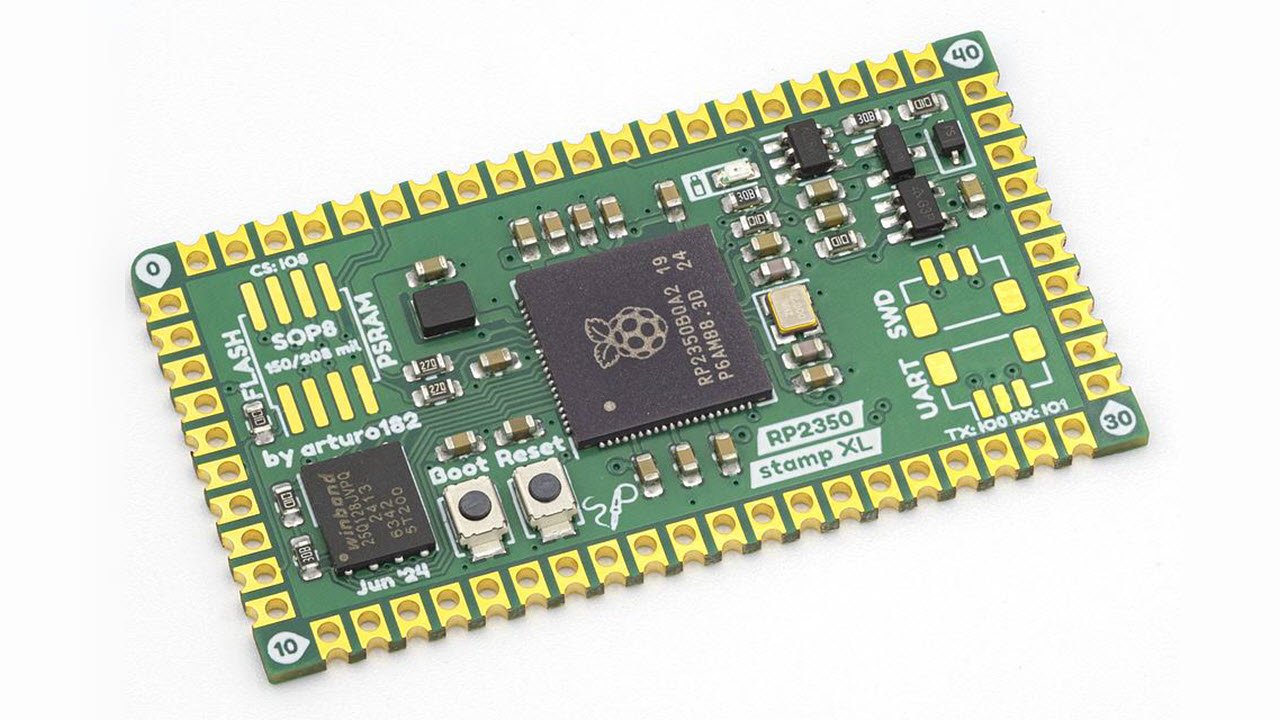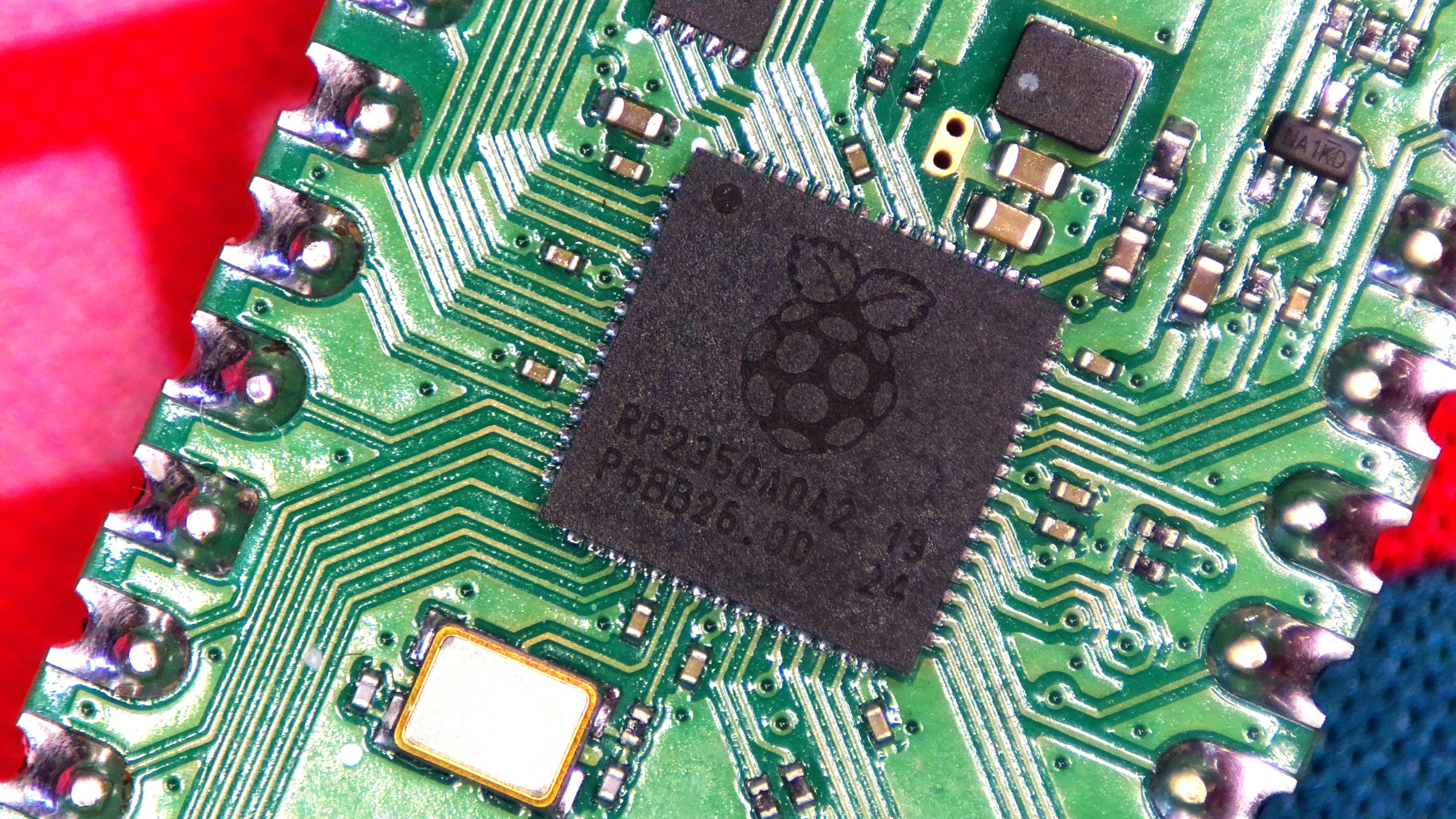The new Raspberry Pi Pico 2, released just two weeks ago, has garnered a lot of attention from the maker community. Powered by the RP2350, the Pico 2 comes with two different CPUs in one package. The first is a powerful dual-core Arm Cortex M33, the second is RISC-V based and designed as a personal project by Raspberry Pi engineer Luke Wren.
RP2350 Block Diagram
The RP2350’s Arm Cortex M33 cores are more powerful than the Arm Cortex M0+ found on the original RP2040 of theRaspberry Pi Picoand theRaspberry Pi Pico W, But the most intriguing feature has to be the dual core RISC-V Hazard3 CPU. This CPU has performance somewhere between the Arm Cortex M0+ of the RP2040 and the Arm Cortex M33 of the RP2350. It is the first Raspberry Pi product to use RISC-V architecture, but it may not be the last. Just don’t go expecting to see it pop up in the successor to theRaspberry Pi 5.
The release of the Raspberry Pi Pico 2 saw the $5 upgrade to the original, and dare we say beloved original Pico. For only an extra dollar we get lots more performance, nut, the RP2350 isn’t the only chip to be released. The RP235X are a series of chips based on the same CPU and RAM configuration, but some have onboard storage and an even greater number of GPIO pins.

RP235X Packages
The RP2350A, as used in the Raspberry Pi Pico 2 has the following specifications.
If we compare the RP2350A package with the specifications of the Pico 2 we note that the RP2350A (and RP2350B) has no internal storage. Instead the RP2350A and B use external QSPI storage, just like the original Raspberry Pi Pico’s RP2040. But the RP2354A and B offer 2MB of on-chip stacked storage via a Winbond W25Q16JVW connected to the QSPI interface.
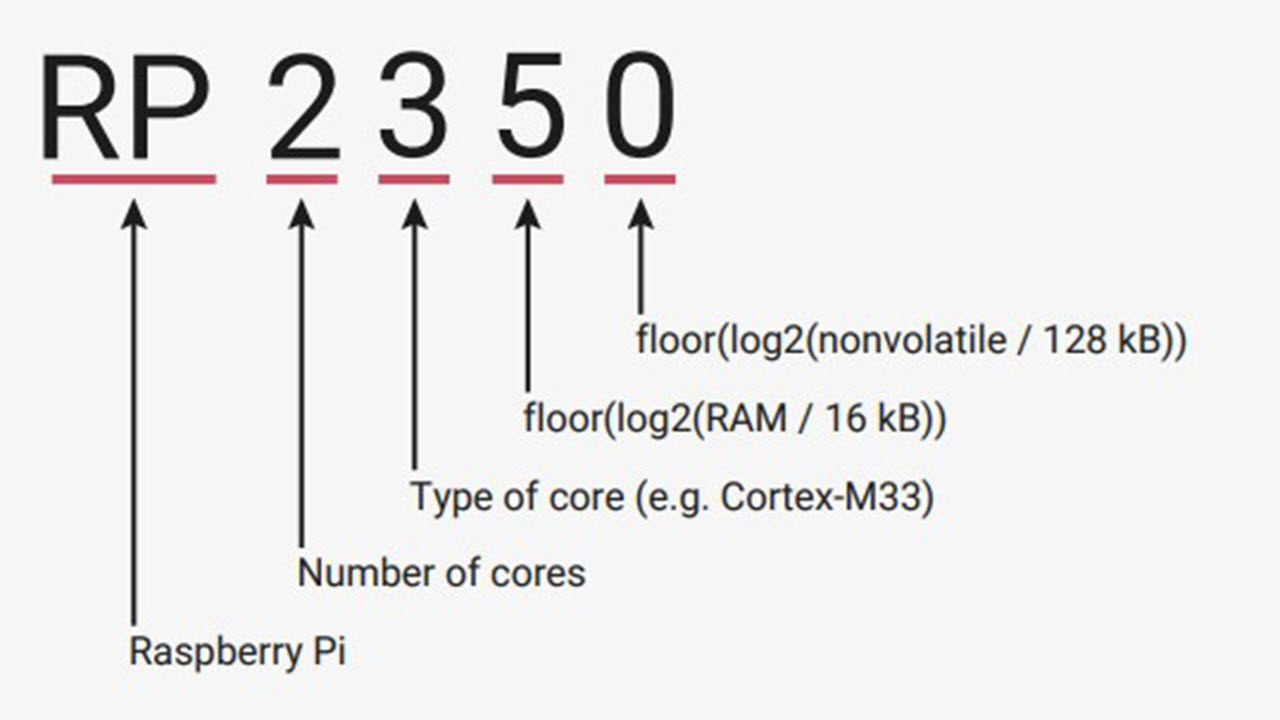
We’ve seen plenty of RP2350A and B powered boards, but nothing has emerged about the RP2354 chip, nor any products which are powered by it.
Get Tom’s Hardware’s best news and in-depth reviews, straight to your inbox.
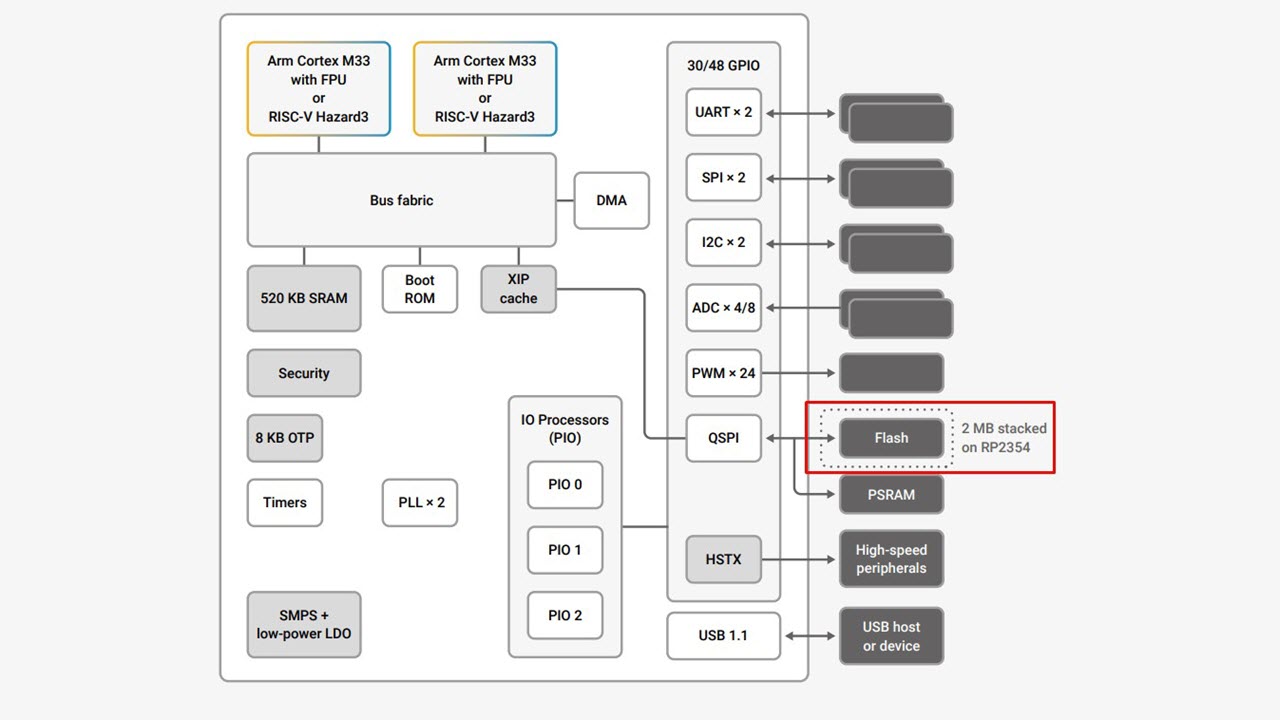
The RP2350A and the RP2354A are both 7mm^ QFN-60 packages with 30 GPIO pins broken out around the 7mm^ square chip. The GPIO provides UART, SPI, I2C, 24 PWM and four analog to digital converters, used for analog input. These analog pins are mapped to physical pins 40 to 43 (GPIO 26,27,28 and 29) on the top right of the chip.
The RP2350B and the RP2354B are both 10mm^ QFN-80 packages and the extra area affords the chip more GPIO pins. Boosted from the 30 GPIO pins found in the RP2350A and RP2354A, the RP2350B and RP2354B have 48 GPIO pins. But what are the extra pins? We’ve mapped them out to compare the physical pin references between the QFN60 and QFN80 packages.

Basically, the extra GPIO pins (GPIO 30 to 47) present on the QFN80 package of the RP2350B and RP2354B provide four more analog pins (GPIO 40 to 47) and a bunch more general purpose IO should we need them. One would assume the extra general purpose pins offer PWM, and a quick glance at the datasheet confirms that they do. So now we have even more PWM pins to control servos or other timing critical components.
More RAM?
Every Raspberry Pi Pico 2 ships with 520KB of SRAM, but should a third-party wish, it can add up to an additional 16MB of PSRAM which also uses the QSPI interface (see the block diagram.) Pimoroni were quick off the mark to add 8MB of PSRAM to itsPimoroni Pico Plus 2board which uses the RP2350B SoC. This board also has 16MB of external QSPI storage squeezed into a board that maintains electrical compatibility with the Raspberry Pi Pico 2.
If you need the RP2350B in a smaller form factor, but with the same 8MB of PSRAM and 16MB of QSPI storage, thenPimoroni’s PGA2350offers an alternative. Measuring 25.4mm^, the PGA (Pin Grid Array) layout affords access to all 48 of the GPIO pins found on the RP2350B, all that you need to do is design a circuit around it.
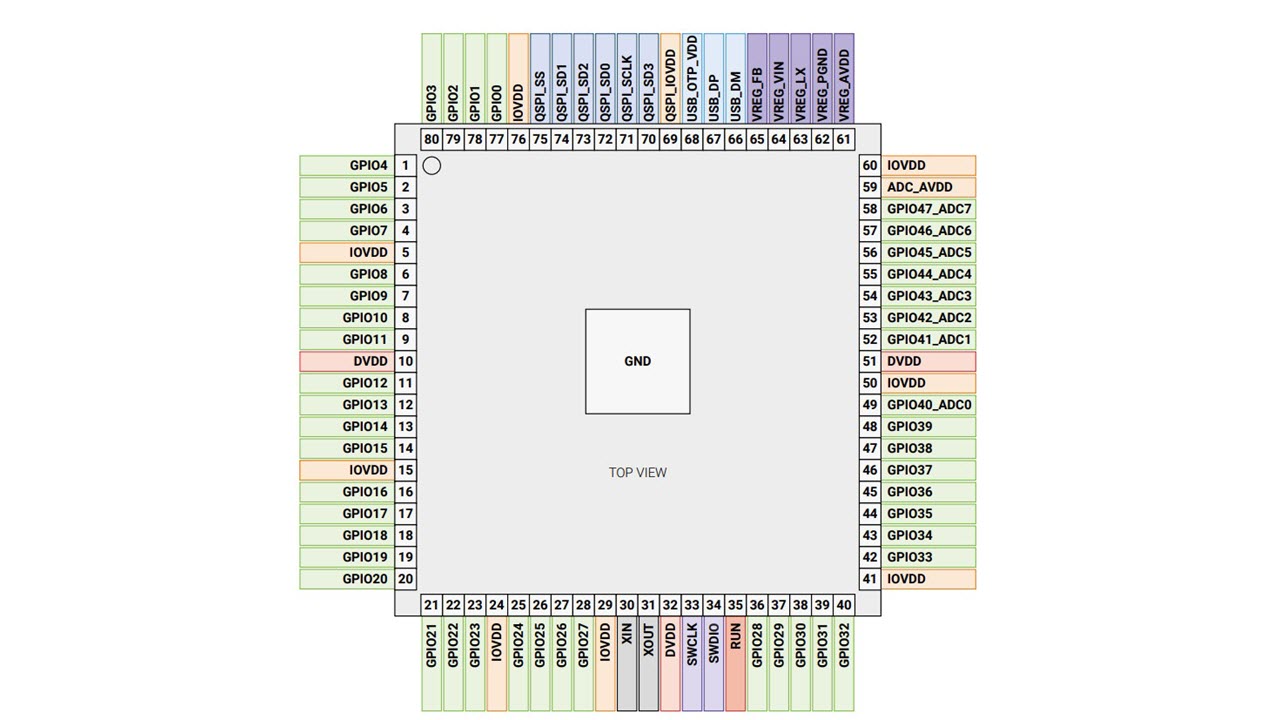
An alternative to the PGA2350 comes from Solder Party. ItsRP2350 Stamp XLbreaks out all 48 GPIO pins of the RP2350B into a 45 x 25mm package. We get 16MB of QSPI flash, but only 520KB of RAM. The RP2350 Stamp XL is designed to be surface mount soldered to a carrier board, or to your own PCB project.
RP235X Availability
At the time of writing, the RP235X series are not in general circulation. There is obviously some quantity of chips available for third parties to design and sell their creations. But the RP235X is not for general sale as yet. It is hoped that the RP2350 will be in general circulation by the end of 2024.
The RP2354 is also mysterious; we’ve yet to come across a device with this chip inside of it. The RP2350 datasheet does provide details on the basic specs, but information such as the thermal characteristics have yet to be determined.
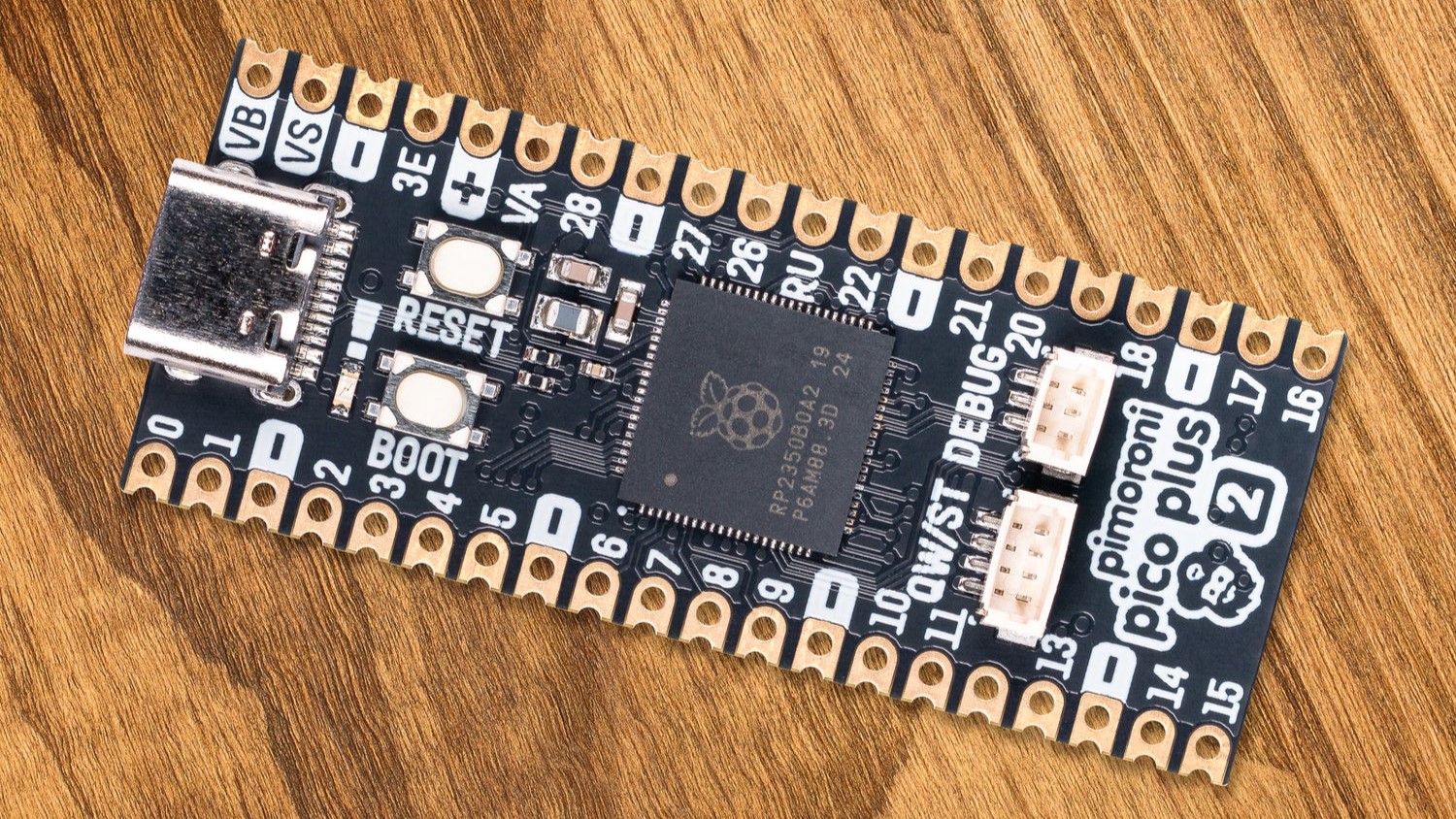
Les Pounder is an associate editor at Tom’s Hardware. He is a creative technologist and for seven years has created projects to educate and inspire minds both young and old. He has worked with the Raspberry Pi Foundation to write and deliver their teacher training program “Picademy”.

